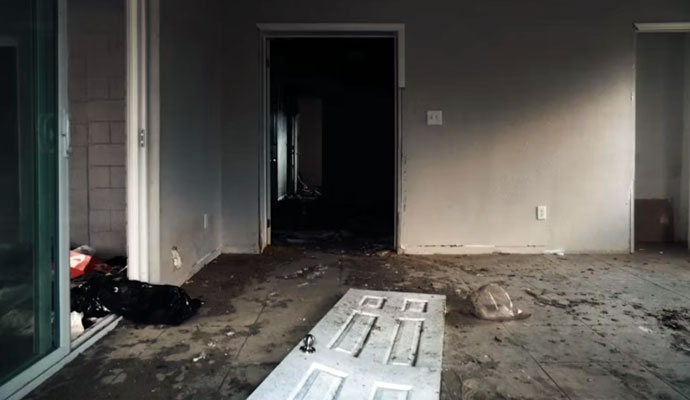When the wind finally stops and the sky clears, the silence can be the loudest thing you’ve ever heard. Your home—your safe place—has taken a hit. Maybe the roof’s gone, the basement’s flooded, or shattered windows now let in more rain than light.
First, if you’re reading this in the wake of a storm, we’re so sorry you’re going through this. No one ever really expects it to happen to them. But here you are, facing down the aftermath, maybe still shaking from the chaos. You’re not alone—and you’re not powerless, either.
Storms leave damage. But what comes next? That’s where storm damage restoration begins. This isn’t just about rebuilding your house—it’s about regaining control, piece by piece. Here’s what to do right now and in the next few days to protect yourself, your home, and your peace of mind.
1. Start with Safety—Yours and Your Family’s
Before you even think about the house, take care of yourselves. Check for injuries. Make sure everyone—including pets—is accounted for and okay. If anything feels unsafe (power lines down, gas smell, structural damage), get out and stay out. Call emergency services or your utility provider.
It’s easy to want to jump into action—rescue belongings, inspect the damage—but don’t rush. Wet floors, sharp debris, and hidden electrical hazards are serious risks. Always assume waterlogged wiring or appliances are dangerous. Even minor-looking roof damage can collapse under weight. Safety first, cleanup second.
2. Document Everything—Even the Stuff That Doesn’t Look Too Bad
Once it’s safe to go in, take photos and videos. Lots of them. Walk room by room and capture every bit of visible damage—from soaked carpets to cracked ceilings to that garden gnome now buried halfway into the drywall.
Open drawers, cabinets, and closets. Moisture can sneak in anywhere, and mold loves dark, forgotten corners.
Why so detailed? Because insurance adjusters weren’t there, and your memory won’t catch it all later. Don’t wait to clean up before documenting—it’s hard to prove damage once it’s gone.
3. Call Your Insurance—but Keep It Calm and Factual
Your insurer needs to know what happened, but this isn’t the time for an emotional play-by-play. Be concise and factual: “Storm on [date], visible water intrusion in [rooms], roof damage, documented with photos and video.”
Why? Because adjusters are listening for language that could be used to limit what they cover. It’s not personal—it’s policy. So, stay polite, but assertive.
More so, ask specifically what temporary repairs or emergency services they’ll reimburse. Get it in writing or by email.
4. Prevent Further Damage—Even Small Steps Matter
Insurers expect homeowners to take reasonable steps to protect their property from worsening damage. That doesn’t mean climbing on the roof—but it does mean covering it with a tarp (professionally if needed), shutting off water to broken pipes, or moving salvageable items to dry ground.
5. Mold Doesn’t Wait
If your home’s taken in water, mold can start forming in as little as 24 hours. Even if things seem dry, moisture can hide behind walls, under floors, and inside insulation.
Open windows if you can. Use fans or dehumidifiers. Pull up wet rugs or carpet padding. And get a professional moisture assessment as soon as possible.
A tip from the pros: Ask your storm damage restoration company if they use thermal imaging or moisture mapping tools—these can detect water that the naked eye can’t. It’s not about being fancy—it’s about catching mold before it takes root.
6. Be Thoughtful About Who You Let Work on Your Home
After a storm, there’s often a surge of contractors, and not all of them are legit. Some are licensed pros. Others? Fly-by-night crews are looking to make a quick buck.
Only work with contractors who are licensed, insured, and experienced with storm damage restoration. Ask for references, proof of credentials, and itemized estimates.
7. Check for Hidden Programs That Can Help
If your area has been declared a disaster zone, FEMA or state relief programs may be available, even if you have insurance. These can help cover gaps like temporary housing, living expenses, or uninsured losses.
Also, check with:
- Local nonprofits and churches
- City emergency funds
- Your mortgage lender (some offer temporary payment relief)
8. Your Mental Health Matters, Too
This part doesn’t get talked about enough: storm recovery isn’t just physical. It’s emotional. Your home holds your life—memories, milestones, routines. Seeing it damaged can feel like grief.
Take breaks. Lean on friends and family. If kids are involved, reassure them and keep routines as normal as possible. Some storm damage restoration teams even work with crisis counselors or offer referrals—ask if they do.
You’re not overreacting. You’re human.
The Bottom Line: You Can Rebuild—One Step at a Time
In the first hours and days after storm damage, it’s okay to feel overwhelmed. But there’s a path forward, and you don’t have to sprint it all down at once.
Start with safety. Document what you see. Make smart calls, ask hard questions, and don’t be afraid to lean on professionals.
Your house might be battered, but you’re not broken. And the steps you take now will set the stage for getting back to solid ground—literally and emotionally.










